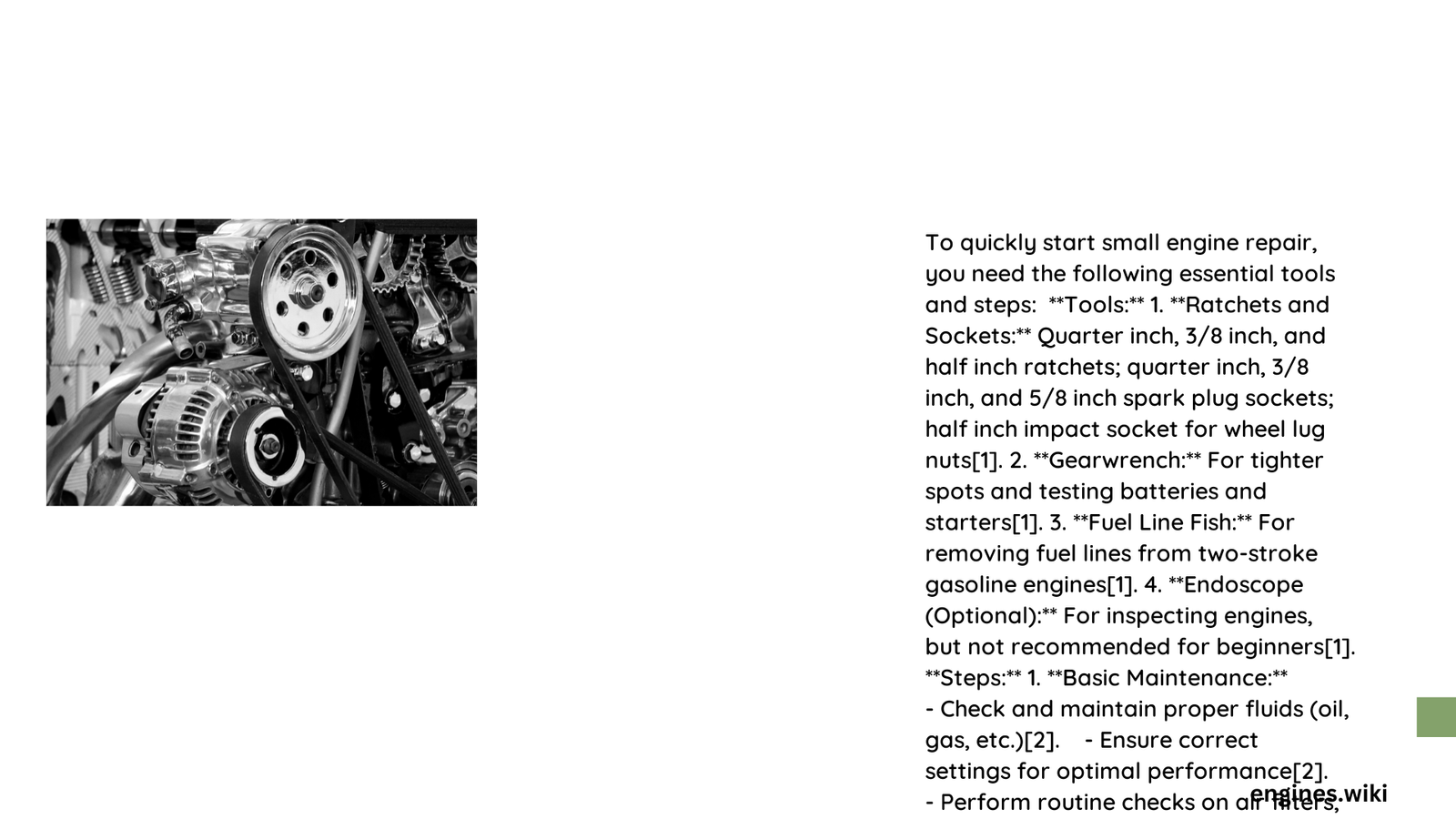Small engine repair can be intimidating for many, but with the right knowledge and tools, anyone can diagnose and fix common issues quickly. This comprehensive guide provides step-by-step procedures for troubleshooting, maintaining, and repairing small engines, empowering DIY enthusiasts to save time and money by addressing mechanical problems efficiently.
What Are the Essential Tools for Quick Start Small Engine Repair?
Before diving into repairs, gather these critical tools:
| Tool Category | Specific Items |
|---|---|
| Hand Tools | – Screwdrivers (flathead and Phillips) |
| – Pliers | |
| Cleaning Tools | – Stiff plastic-bristle brush |
| – Soft cloth | |
| – Pipe cleaner | |
| Lubricants | – Lightweight oil |
| – Lithium grease | |
| – Silicone lubricant | |
| Solvents | – Carburetor cleaning solvent |
| – Petroleum solvent |
How to Diagnose Common Small Engine Problems?

Identify Starting Issues
When your small engine refuses to start, follow this systematic diagnostic approach:
- Fuel System Check
- Verify fuel quality and level
- Ensure fuel is fresh (less than 30 days old)
-
Check fuel mixture ratio (40:1 or 50:1 for 2-stroke engines)
-
Spark Plug Inspection
- Remove and examine spark plug condition
- Check spark plug gap (0.028-0.040 inches)
-
Look for signs of fouling or wear
-
Compression Test
- Use compression gauge
- Healthy engines typically show 90-110 PSI
- Low compression indicates potential internal damage
Carburetor Cleaning Procedure
Step-by-Step Carburetor Maintenance
- Remove carburetor carefully
- Disassemble components
- Soak parts in carburetor cleaning solvent
- Use needle or wire to clear small passages
- Dry and reassemble
- Reinstall on engine
What Maintenance Prevents Engine Problems?
Regular Maintenance Checklist
- Oil Changes
- Check oil level before each use
- Change oil every 25-50 operating hours
-
Use manufacturer-recommended oil grade
-
Air Filter Care
- Clean filter every 5-10 hours
- Replace every 25-50 hours
- Use appropriate filter type (foam or paper)
How to Replace Critical Components?
Recoil Starter Rope Replacement
Estimated Time: 15-30 minutes
- Disconnect spark plug cable
- Remove starter housing
- Remove old rope
- Thread new rope through pulley
- Slowly wind rope
- Reassemble components
Spark Plug Replacement
Estimated Time: 10-20 minutes
- Locate spark plug
- Remove using appropriate socket
- Check and adjust gap
- Install new spark plug
- Torque to manufacturer specifications
Pro Tips for Efficient Repairs
- Always consult engine manual
- Use genuine replacement parts
- Work in well-ventilated area
- Keep workspace clean and organized
- Take photos during disassembly for reference
Cost Considerations
| Repair Type | Estimated Cost |
|---|---|
| Carburetor Cleaning | $10-$30 |
| Spark Plug Replacement | $5-$20 |
| Complete Tune-up | $50-$150 |
Safety Precautions
- Disconnect spark plug before repairs
- Work in well-ventilated area
- Wear protective eyewear
- Use proper lifting techniques
- Keep children and pets away from workspace
When to Seek Professional Help
Consider professional repair if:
– Compression test shows significant issues
– Complex internal engine problems exist
– Lack of specialized tools or expertise
Conclusion
Quick start small engine repair requires patience, systematic approach, and basic mechanical understanding. By following this guide, most common engine issues can be resolved efficiently and cost-effectively.
